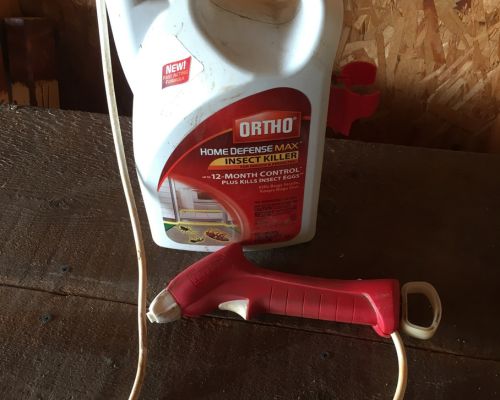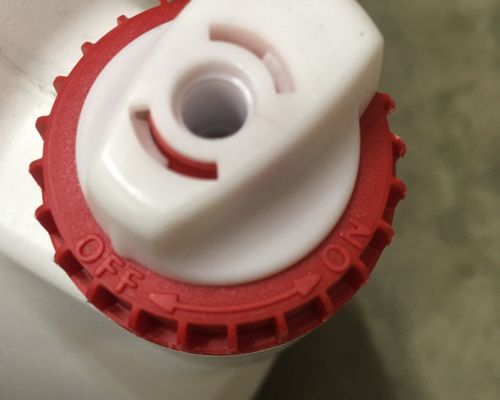Keeping your home or garden free from pests requires the right pesticide and the right tools to apply it. This is why companies like Ortho and Spectracide offer convenient hand sprayers that come pre-loaded with effective pesticide solutions ready to combat a variety of pesky invaders. However, as straightforward as they may seem to operate, users often encounter certain common issues that can turn the pest control task into a tedious chore.
Whether it’s a clogged nozzle, a misbehaving trigger, or a lack of spray output, fear not! These hurdles can be overcome with a little troubleshooting know-how. In this post, we will dive into a comprehensive list of common problems you might face with your Ortho or Spectracide hand sprayer, alongside detailed, easy-to-follow solutions. From ensuring a proper setup to tackling battery issues, we’ve got you covered. So, don’t take your frustration out on the sprayer, follow this guide and get it back in action.
Different Pre-mixed Sprayer Types
Now, first, we should note that there are several different brands that offer similar premixed pesticide sprayers, Ortho and Spectracide brands are very common. These different pre-diluted sprayers are all very similar but there are a few different styles.
Note: These sprayers are similar to pre-mixed Roundup and herbicide sprayers. Most of this information will be the same but you can find the pre-mixed herbicide sprayer troubleshooting guide here.
Manual Sprayers
Many of these sprayers are manually operated. This means you either pull a trigger like you would with a Windex spray bottle, or you need to pull a lever out of the handle, then you can pull a trigger to spray until the lever completely retracts.

Battery Powered
Electrical-powered triggers are the other common method used to disperse the pesticide. These are typically powered by replaceable AA batteries. They provide a more consistent stream of fluid compared to the manual versions.

Outside of the actuation method and the type of liquid inside, these sprayers are very similar.
Pesticide Sprayer Troubleshooting: Ortho/Sprectracide/Enforcer Premixed Sprayers
Now let’s jump into the different common issues and how to solve each one:
Issue: Nothing is Happening!
Before jumping into complex troubleshooting, it’s wise to check some basic things that can be overlooked. We’ve all had those times when something isn’t working simply because we forgot to switch it on!
Solution: First, if the sprayer lid or spray nozzle has an on/off position, be sure this is on. Also, check that the spout where the house leaves the tank is open. If your sprayer comes with an electronic wand, check that there are indeed batteries in it. Also, make sure there are no paper tabs obstructing the battery terminals, as these are often placed to prevent accidental spraying or battery drainage in transit.

If you have been using a battery-powered sprayer for even a short time and you no longer hear the motor run when you pull the trigger, try new batteries.
Issue: Blockages
The most prevalent issue with trigger gun style or electric wand Spectracide sprayers and spray bottles is clogging, usually due to chemical residue accumulating in the spray tip. An irregular or distorted spray pattern emerging from the nozzle is a telltale sign of residue build-up.
Solution: Immerse the spray tip in warm, soapy water to dissolve any residue. While submerged, gently operate the trigger back and forth. This action alone might resolve the issue. If the blockage persists, utilize a small pin to delicately clear any remaining debris from the spray tip.
For stubborn blockages, a longer soak followed by disassembling the nozzle/sprayer head for a thorough cleaning with an old toothbrush might be necessary. A more detailed cleaning guide can be found in this article.
If a clog persists, inspect your hose to ensure it’s free from kinks from the lid down to the spray gun. Also, take a look inside the tank. There’s a suction tube inside the tank, which may require unclogging or reattachment to the lid.
Issue: Air Lock/No Prime
Occasionally, pulling the trigger yields no results. Even after cleaning the sprayer and checking for kinks, it doesn’t operate. An airlock is usually the culprit.
Solution: Lift the tank/bottle up high and hold the spray gun as low as you can. Pull the trigger multiple times. This will help to push the air out of the hose and then liquid should start to flow again when you pull the trigger.
If this does not work, detach the hose from the tank. Straighten the hose with the trigger gun/wand end below and the end that connects to the tank up high. Depending on your sprayer type, electronic or manual, activate the button or pull the trigger multiple times. Reattach the hose to the tank while keeping the trigger below the tank, and pull the trigger again.
With several trigger pulls, it should resume spraying. Once operational, you can lower the sprayer bottle/tank below the trigger gun and continue your task.
Issue: Trigger Pulls Too Easy/Nothing Comes Out
If the sprayer stops spraying abruptly and the trigger is pulling with very little resistance, then the trigger mechanism inside the wand is likely broken. Often the entirety of the internal components are plastic and they can get worn out, soft, and fail to hold their shape, making the trigger fail.
Solution: You can take the wand apart to see if there is a pin that can be replaced with a small wire but in my experience, it is hard to make it work like new. You might just need another sprayer.
Issue: Leaking
Leaking pesticide all over your floor or garden may result in a hazard or threat to other animals, plants, or people. The cause can be hard to identify, but the first thing to do is locate the general area of the leak.
Spray Nozzle: The spray tip may drip, drip, drip, even when you are no longer pulling the trigger. This can be a result of a bad seal inside the wand. When the trigger is not being pulled, there is a tight seal keeping liquid from leaking out. If this seal is damaged or worn out, it won’t seal up tight.
This may be repairable. To do so you need to open the wand. Some sprayer wands can be taken apart by removing screws but others are glued. If you can take apart the wand you might be able to repair the seal by replacing or lubricating the seals.
Often, if your sprayer is like mine, it is not worth repairing. The wand on my Ortho sprayer is sealed up at the factory and taking it apart would probably break it beyond repair. You can see in this video that there is no way to take apart the wand without breaking factory seams.
Hose Connections: The hose is crimped or pressed onto the sprayer tank/bottle and also the end of the wand. If this crimped connection is damaged or weakened over time it will leak. Fixing this can be hard with small tubing as most of this is a factory-compressed or crimped connection. The tubing is very small making it hard to get a hose clamp or even a zip tie to solve the problem.
Tank: If your tank is cracked and leaking, you don’t have to ditch the entire sprayer. Save the lid, hose, wand, etc., and use it on a refill bottle from the same brand (If available).
Maintenance Tips for Longevity
These types of premixed sprayers are not necessarily made to last. There are usually refills that you can buy, but eventually, the spray guns or triggers wear out. A long-term solution is to purchase a dedicated hand pump sprayer for pesticides that is more durable. You will have to dilute the pesticide yourself but it can save money over time if you spray more often. If you are looking for a more permanent hand pump sprayer, you can take a look at the ones that have worked best for me on this page.
If you already own a pre-mixed pesticide sprayer, with regular maintenance, you can extend its usability for several refills. Here are some upkeep tips:
- Clean After Each Use: Dismantle the suction hose, lid, tube, and spray wand from the bottle/tank. Rinse the assembly thoroughly with fresh water.
- Storage: Store the sprayer indoors when not in use. If feasible, avoid storing in a garage or outbuilding susceptible to freeze/thaw cycles. Keep it shaded from direct sunlight when not in use.
- Remove batteries when not in use to preserve their lifespan.
Final Thought
Pre-mixed Spectracide sprayers are indeed a handy tool, albeit prone to malfunctions. Armed with these tips, reviving your sprayer to working condition should be a straightforward endeavor.

